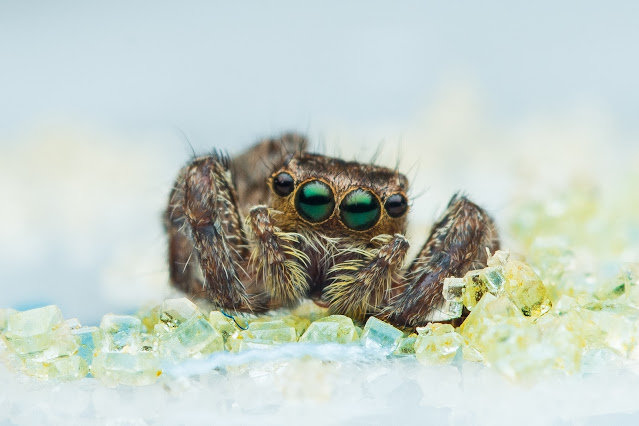478
 |
| Photo by Angeli Ann Dinsay from Pexels |
Nathan Morehouse, associate professor at the University of Cinncinati, examined a common jumping species of spider, Saitis barbipes, found in Europe and North America. The males of this species have furry red crowns and legs. They perform courtship dances to attract their female counterparts.
“We assumed they were using colour for communication. But we didn’t know if their visual system even allowed them to see those colours,” said David Outomoro, a researcher associated with the study.
The biologists collected spiders for lab study in Germany. They used microspectrophotometry to identify the sensitivity of their photoreceptors (light-sensing cells) towards the light of different colours and wavelengths. But, they found no evidence for red photoreceptors.
Microspectrophotometry is a technique used to measure the absorption and transmission of a light spectrum. This can be measured through a microspectrophotometer. Here, the technique was used to measure the absorption, transmission, and reflection of the spiders’ eyes.
The researchers also looked for coloured filters within the eyes of the spider that might shift green sensitivity to red but found none. Rather, they identified patches on the spider that absorb the ultraviolet wavelength that made it appear green. Also, the red colour appeared like black markings on the spider.
How the spiders appears to a bird, human and another spider Photo credit: Mateusz Glenszczyk and Cynthia Tedore |
“It’s a bit of a head-scratcher what’s going on here,” said Morehouse. “We haven’t solved the mystery of what the red is doing.”
Animals use colours in different ways including, warning predators for their toxicity, camouflage, attracting their mates, etc. But it’s not always evident what their bright colour signifies, he added. Cynthia Tedore, the senior author of the study, said the results of the research were surprising.
“Males have bold red and black colouration on their forward-facing body surfaces which they display during their courtship dances; whereas, females lack colouration altogether,” she said. “This initially suggested to us that the red colour must play some role in mate attraction.”
“Instead, we found that red and black are perceived equivalently, or nearly so, by these spiders and that if red is perceived as different from black, it is perceived as a dark ‘spider green’ rather than red,” said Tedore. The study suggests that the red and black colours can improve a spider’s defensive camouflage.
“For predators with red vision, at natural viewing distances, the spider’s red and black colour patches should blur together to become an intermediate orangish-brownish colour, which would help the spider blend in with its leaf litter habitat better than all-black colouration would,” said Tedore.
The experts noted that many colourful jumping spiders can see the red colour clearly. Moreover, many pale coloured spiders have great colour visuals. “We thought it would be a tidy project. Colourful spiders can see many colours,” said researcher Outomuro.
Morehouse is the director of UC’s new Institute for Research in Sensing. The institute analyses the way humans and other living creatures perceive the world. According to him, this discovery shows how animals perceive the world differently from humans. For example, sunscreen absorbs ultraviolet radiation very well, but we are unable to feel it as we can’t see the spectrum.
“If extraterrestrial beings were to study us, they may ask, ‘Why did they paint their bodies with UV absorbing colours when they went on the beach?’ We have no perception of ultraviolet light, so we have no idea we’re creating these UV colours when we put sunscreen on,” said Morehouse.
“What does a wind turbine or an automobile window or a high-rise seem like to a chook that would run into it?” he asked. “We need to consider their perceptual worlds coexist. But I also think it’s fascinating to imagine our ways into the lives of animals that experience the world in a way that is completely different to us.”
The original study is published in the journal ‘The Science of Nature’.

